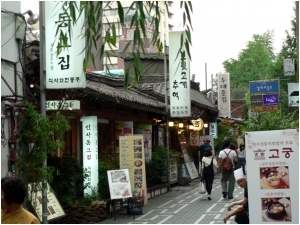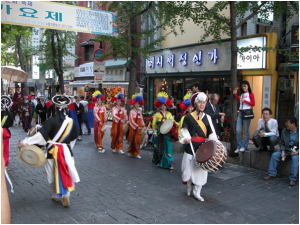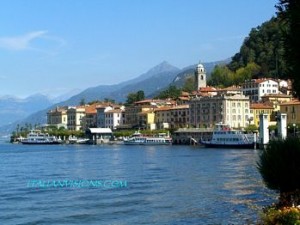Italian fashion
Where do GUCCI, ARMANI, VERSACE and many other brands come from? ITALIA. They are Italian designers known everywhere because of their style, elegance and mark.
How can you easily recognize people coming from Italy? Definitely from the way they are dressed. Impeccable, elegant and in fashion all the time. That’s Italy and these are Italians.
You may think fashion is a kind of obsession for Italian people but it is not. It is a part of their way of being, of their way of thinking. Be in fashion means to take care of one’s body and appearance, to express one’s likes and dislikes. To show one’s personality. It is the inner personality that comes out.
To better understand Italian personality you should know something more about it. Learn Italian could combine you interest in fashion and Italy with the elegance of the most dressed up language of the world!
Italian Music
Luciano Pavarotti, Andrea Bocelli, Laura Pausini are only some of the most famous Italian singers.
Italian Opera, that is to say music + singing + acting together, started to spread in 1500. Italy is considered the mother land of Opera and it is still the most prestigious country where singers and musicians come to study music.
Know Italian language can be very useful while studying music: the technical terms and directions as for Opera are still in Italian, no matter in which country people are learning to play a music instrument, to sing or to read music. Moreover many Operas were born in Italian and are always performed in the original language.
Children usually start learning a second language through songs because we believe that music may be a funny and simply way to get involved into a different language.
But why don’t we take into consideration the same idea for adults as well? Music might be a great starting point to appreciate and love Italian language! And don’t forget that Italian language has got a sound and music inside itself already.
Italians love sport!
Italian sport comes immediately after food. Italians love sport, they like doing sport but they prefer watching it! What is Italians favorite one? Football! Italian CALCIO…
Football was born in England and came to Italy in the late 1800 but it immediately had a wide success. In few years many of the most famous football clubs were set up such as Juventus (1898, black and white t-shirt) and Internazionale Milan (1908, blue and black t-shirt), usually known as Inter.
Italian football teams and players are among the most famous and excellent of the world. Everybody knows at least something about Italian football and about Italian successes (many times Italian teams won Champions Leagues and recently, in 2006, the National Italy football team won the World Cup).
But football is not the only one: Italy excels for skiing, swimming and many others. Italians are simply keen on sports.
When you are keen on something it is easier to be interested in what goes around it. For those who love sport, boning up on Italian language could be a funny way to train your tongue!
Who doesn’t love Italian food?
“I fell in love with the food and then I fell in love with the language”.
Many people say it while talking about Italian language.
When people think of Italy the first thing that comes into their mind is definitely the food! PIZZA, SPAGHETTI, MOZZARELLA and many others. Although people cannot speak Italian they can certainly pronounce these words, sometimes properly and some others in a funny way. But they never try to translate it, because the quality of a food tradition is not translatable in other languages and cultures.
Food is a part of Italian culture and tradition. The good quality of Italian food has travelled during the time together with the language that has spread abroad thanks to the successfulness of the cooking.
Learn Italian and love Italian food are two good reasons to plan a journey to Italy and to meet the most delicious language ever!
Learning Italian: a Way to Go Through European Culture and History
European history is one the most ancient all over the world. 2700 years ago Romans settled in Italy, built Rome and conquered most part of Europe, part of Asia and part of Africa. They were the first ones in spreading Italian culture, traditions and language.
The Roman Empire was great: Romans were excellent constructors, politicians, lawyers and soldiers. The language spoken by Romans was Latin, the old form of current Italian, a dead language today but still alive because people continue to be interested in it. It is taught in European schools as it is the foundation of many languages (such as French, Spanish etc.).
Italian history and language are strictly linked: language has changed during the time, from place to place (from Latin into Italian, French, Portuguese and many others) and it would be a great experience to study such an old language.
The better you know a language the better you’ll understand its story and culture.
Insa-dong (인사동): A must-see in Seoul, Korea
Insa-dong (인사동) is a must for Seoul tourist. To experience the traditional culture of Korea while staying in Seoul, visit Insa-dong. Insa-dong Street is one of the most memorable landmarks to represent you Korean traditional crafts and culture. With art galleries, traditional craft stores, antique art shops, traditional tea cafes and restaurants, it should be everything for visitors wanting to experience real Korean traditions. Especially, stores in Insa-dong are good for a wide kind of antiques-old paintings, antique furniture, ceramics, paper crafts, hanbok (한복/ traditional clothing), hanji (한지, traditional paper), and folk crafts can all be found in abundance.
Insa-dong Street stretches over 700 metres between the Anguk-dong Rotary (안국동 로터리) and Tapgol Park (탑골 공원). It is a quite long street. The art galleries (Insa Art Gallery, Dong Duk Art Gallery, Gana Art Space, Insa Art Centre…) in this area also make Insa-dong ideal place as a Korean cultural attraction. In 1999, Queen Elizabeth II visited the area and expressed deep admiration for the hanbok(한복/ Korea’s traditional dress) and for Korean pottery in particular. On weekends, the street is vehicle-free and flea markets are set up. Travelers from abroad also join the flea market with various goods from all over the world. So you could enjoy multicultural goods and events there.
Insa-dong creates unique atmosphere which is mixed up Korean traditions and young energy. Do not miss souvenir shops in Insa-dong. You could purchase Korean traditional souvenirs for your family and friends at a reasonable price. You can have help from the Insa-dong Information Centre (Tel: 82-2-737-7890) located 100m from Ssamjigil (쌈지길) toward Jogyesa Temple (조계사). The centre provides tourism information, interpretation services and free internet access.
By Sarah Yong (Korean teacher)
Learning Italian: Cultural Heritage
Lake Como
Italian language is spoken by over 70 million of people living in Italy but it is alive across the world thanks to other 70 million of Italians living abroad (especially in America and Australia). We could say there is “another Italy outside Italy”.
In Australia there are many people with Italian origins (about 200.000 people who are now in Australia were born in Italy; about 850.000 were born in here but speak Italian as second language at home) and many of them would like their children/grandchildren to carry on their language, culture and tradition.
Somehow Italian language and culture is a part of Australia and nowadays Italian is one of the most spoken languages in this country, too. In schools it is the second most taught language after Chinese. It is a heritage to be carried on and to be maintained.
Italians brought an important contribution to Australia: they came here to work but in the meanwhile they were able to export their food, their way of constructing buildings, their style.
The so called “made in Italy” is famous all over the world. And learning Italian is a way to go through it and discover the beauty of one of the oldest language ever.
• European culture and history
• Italian sport
• Italian music (opera)
• Italian fashion
• Italian food
• Italian art
• The beauty of a language
• The importance of learning a second language (different from English family)
• It is easier to learn a similar language (French, Spanish etc.)
• Italian cinema
Children’s Day in Korea (May 5)
In South Korea, May 5 is officially recognized as Children’s Day (어린이날). Parents often give presents to their children, as well as spend time with them. The children are taken on excursions to zoos, museums, and various venues of children-oriented entertainment.
From Jinju, many people gathered to promote and to improve the social status of children and encourage adults to teach awareness. The predominant figure, Bang Jeong Hwan (방정환) greatly contributed the enhancement of participation from the Korean intellectuals, while the Labourer’s Day also tapped together and moved the day toward May 5 . Bang Jeong Hwan first coined the modern Korean word for children, eorini (어린이).
It is one of the most exciting national holidays in Korea which is full of people who want to enjoy Korea’s beautiful spring day with their lovable family members.
– Ashley (Korean Teacher)
Bulgogi: The king of Korean BBQ
The word Bulgogi (불고기) literally means “fire meat” in Korean, which refers to cooked marinated meat, applied old traditional grilling techniques using gridirons or perforated dome griddles that sit on braziers, unlike deep frying or boiling in water.
Bulgogi is made from thin slices of sirloin or other prime cuts of beef. Before cooking, the meat is marinated to enhance its flavour and tenderness with a mixture of soy sauce, sugar, sesame oil, garlic, pepper and other ingredients such as scallions, onions or mushrooms, especially white button mushrooms or shiitake. Sometimes, cellophane noodles are added to the dish, which varies by region and specific recipe.
Bulgogi is traditionally grilled, but pan-cooking is common as well. Whole cloves of garlic, sliced onions and chopped green peppers are often grilled or fried with the meat. This dish is sometimes served with a side of lettuce or other leafy vegetable, which is used to wrap a slice of cooked meat, often along with a dab of ssamjang, or other side dishes, and then eaten as a whole.
– Ashley (Korean Teacher)
IELTS Reading
For many candidates the Reading section of the IELTS test is very challenging. The length of the passages, their topics, the position of the questions (before or after the passage) or the types of questions, are some if the issues the candidates have to overcome in order to get the band score they need.
So, one thing I always recommend before the test is to read a lot, on different topics. This will help increase your reading speed and your ability to grasp main ideas from a written text. Also, it will enrich your vocabulary. At this stage is it important to look up unknown words in dictionaries as this will ensure that you remember them and are more likely to use them if you know what they mean.
Having a good vocabulary is important as the questions will not use the same words as the passages. They will use synonyms and paraphrases.
During the actual test, if a reading passage contains words that the test developers consider too difficult there will be a glossary at the end of the passage. However, if you come across an unknown word that is not in the glossary do not panic. Try to figure out its meaning from the context.
– Adriana Mucea (IELTS Reading Teacher)








Latest Comments